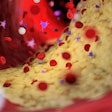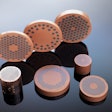Radiology departments received more than one-third of all S10 awards from the U.S. National Institutes of Health (NIH) over the last 10 NIH fiscal years, according to a study published October 11 in Next Research.
Researchers led by Kelly Gillen, PhD, from Weill Cornell Medicine in New York, found that this result corresponds to almost half of all federal S10 funding.
“With imaging being at the core of many basic, translational, or clinical research projects, S10 awards to radiology, particularly high-end instrumentation [HEI] awards, can benefit many departments and investigators across the research enterprise,” Gillen and colleagues wrote.
The NIH created the S10 Program in 1982 to support funding for purchases or upgrades of expensive, specialized, and commercially available equipment to be shared among NIH-funded researchers. The program began with a budget of $3.7 million but has since grown, with the NIH funding nearly $114 million in S10 grants in its 2023 fiscal year. The program has supported a total of 5,500 awards over the last 40 years.
There are three award types within the program. These include the shared instrumentation grant (SIG) awards ($50,000 to $600,000), HEI awards ($600,001 to $2 million), and the basic instrumentation grant (BIG) award ($25,000 to $250,000).
In radiology, funds from these awards may be used to purchase or upgrade high-priced imaging systems such as MRI and PET scanners. With the idea that radiology researchers often rely on expensive new imaging tools, Gillen and co-authors analyzed S10 awards granted to radiology departments in the past 10 fiscal years (2014 to 2023). This included studying their frequency, amounts, intended instrumentation, and resulting publications to understand their impact on the departments and institution.
Using a search of S10 awards, the team exported data from NIH Research Portfolio Online Reporting Tools (RePORTER).
The NIH awarded $273 million in S10 awards during the study period, corresponding to an average award amount of $837,377. Radiology departments received $135.8 million during the 10-year period, which the researchers noted comprises 49.7% of the program's funding. This funding was spread across 116 awards, 35.6% of which were S10 awards.
Finally, the team found that among the S10 award types available for radiology, HEI awards comprised 54 (61.4%). HEI funding mainly went toward high-priced imaging equipment such as MRI scanners and associated tools for both human and animal imaging studies.
The authors highlighted that the S10 award is “logistically and administratively efficient” since it requires that many projects use the same instrument, and is cost-effective because the large award amounts reduce the financial burden on the awarded institution, allowing them to allocate their resources toward other projects.
“This efficiency and cost-effectiveness are particularly important when applied to the purchase of expensive equipment, such as the use of imaging equipment including MRI and PET scanners and associated instrumentation, which are critical tools in modern biomedical research at academic medical centers, most often housed in departments of radiology,” the authors wrote.
The full results can be accessed here.



















